Aries Cerat Heléne DAC and Incito S preamp
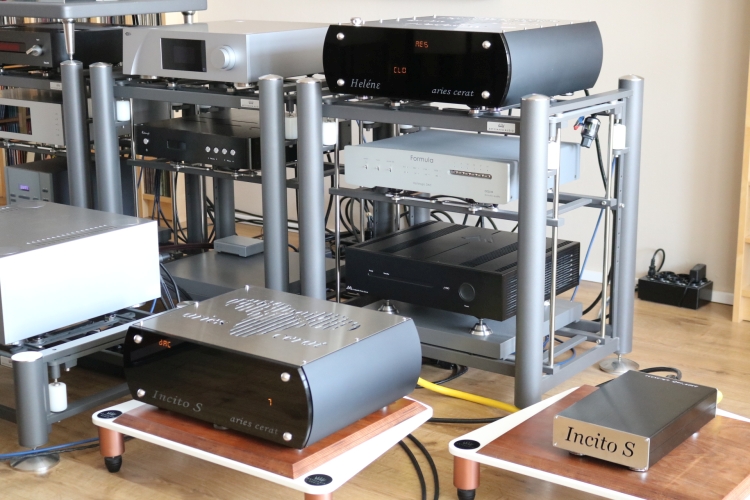
Digital or Analog Volume Control
Besides tonality, there’s an aspect of using a digital front end rather than one that includes an analog preamp that may also be a pivotal factor. As we all know, a digital volume control takes away bits as it reduces the gain and in doing so, it lowers the resolution. DACs try to counteract this by upsampling the signal and performing the calculations at a much higher resolution than is strictly required for the signal to pass theoretically unhindered. For instance, if the calculation is done at 32 bits and you lose a few bits then the 16-bit signal still comes through just fine even with strong attenuation. However, in practice, digital volume controls often do have an audible impact, sometimes even already when reducing the volume by only one step (and using an analog preamp). In the C1 DAC, the volume control is implemented in a hybrid analog/digital fashion. To this end, the DAC will automatically switch to the nearest of three analog values based upon the volume level setting and fine-adjust in the digital domain. No doubt thanks to this clever system but also because the DAC inherently has a super-refined sound, the C1 was the first DAC that I could successfully use without an analog preamp, resulting in superbly well-defined bass, without having to put up with grainy treble in return. But as good as the C1 is, there is no denying that the Heléne DAC and Incito S preamp manage to present the music with more refinement, better fluidity, and indeed higher resolution in the treble.
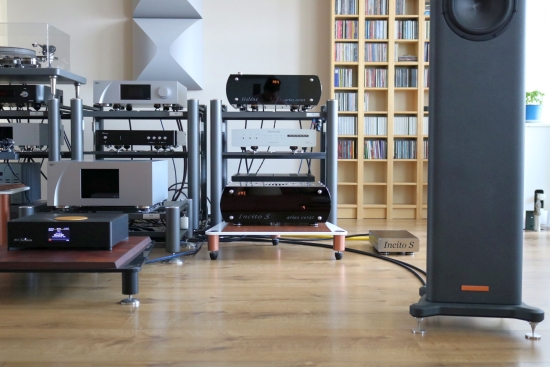
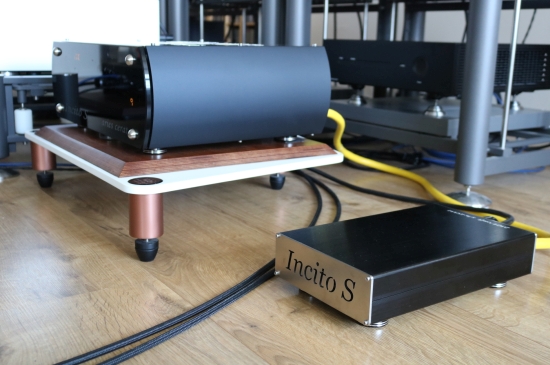
Power supply placement
As I found, the placement method of the Incito S’s power supply also has an impact on the sound. It’s not an extreme difference but sure worthwhile. While the preamp struts all of its capabilities just fine when the power supply is placed directly on the floor and there are no downsides as such, I did note that the preamp became increasingly expressive and gained precision in its imaging within the soundstage when the power supply was placed on the Artesania Modular Floor Platform.
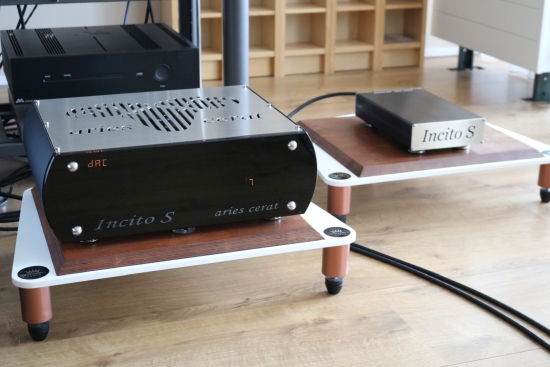
Now that the contribution of the combined Aries Cerat units has been established, it’s time to investigate the DAC and preamp separately. First, let’s focus on the DAC.
AES/EBU
The Heléne DAC has three inputs: Coaxial, AES/EBU, and USB, and the company feels that the latter provides the best quality. Interestingly, in the large majority of my test so far, AES/EBU has proved to sound superior to USB. The results have been so consistent that AES/EBU now is my go-to format. Still, I need to keep an open mind and so, I will of course also assess the Heléne’s USB input.
To see how they compare, I will listen to all three inputs using the same source, the Antipodes K50 that conveniently offers all three outputs. I should note that this server sounds smooth, rich, and relaxed, and thus deviates from the Aqua and Grimm sources. Since the Jorma cable consistently outperforms my USB cables I will set it aside and to level the playing field, I will start by using standard good quality cables.
With the Mogami AES/EBU cable and fed from the Antipodes server, the Heléne sounds very smooth and a little thick but seductively romantic and emotionally captivating. It’s not ideal, though, as the balance comes across as being slightly saddled, meaning that the midrange sounds slightly restrained and less expressive compared to the frequency extremes. The bass is big and full and a little sweet and the treble is open and airy, and as I already found when comparing the two units in tandem, the resolution and refinement are first-rate. But compared to what I am used to from the C1 and the Aqua Formula when fed from the Antipodes server, the Heléne DAC definitely has a warmer sound, and while that may actually appeal to a lot of listeners, to me, the midrange lacks incisiveness and liveliness.
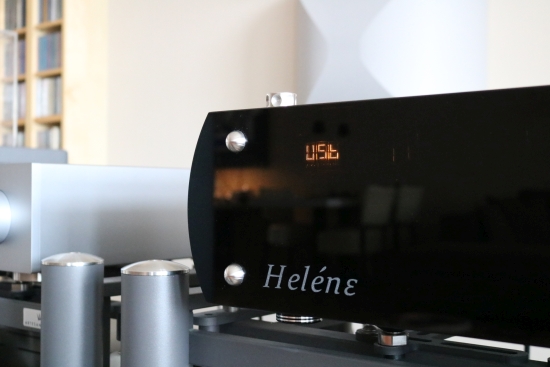
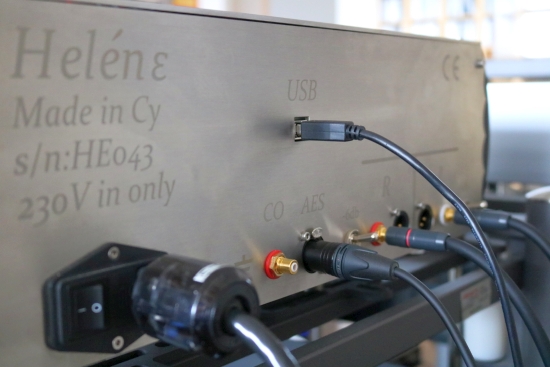
USB
Switching from the Mogami AES/EBU cable to the no-name USB cable, I sort of got slapped in the face, but in a good way! WOW, the sound became much tighter, much more controlled, and even more transparent! This was expected, and not expected. You see, in all my tests, USB tends to sound more controlled, but always in a negative manner, as if the music is playing with the handbrake on. In this case with the Heléne DAC, however, it seems to really pay off by combining perfectly with the DAC’s inherent smooth sound. The overt control that I usually hear with USB also finds its way into the soundstaging but, with the Heléne, this does not seem to be the case. At this point, I got flashbacks to the Denafrips Terminator II DAC and how impressive its USB implementation sounded, not because the two DACs are in any way similar but in how both their USB inputs compared to the AES/EBU inputs. Yes, the increased control does make the soundstage feel slightly more stilted but because the DAC has more than enough liquidity in reserve, the result is still plenty organic.
One thing that Ron mentioned is that while he made sure to run in all the inputs as well as each volume setting, he did not use the USB input. As such, it might still further develop with increased use.
A weird issue that I experienced is that there is a loud “pop” from the speakers whenever I switch the Heléne DAC inputs between AES and USB or vice versa, and then often again when clicking play in the Roon interface. This is remarkable because otherwise, so far, the two components have been whisper-quiet during all operations. There’s no hum, neither from the speakers nor mechanically (from the component’s chassis) and no hiss whatsoever.
In any event, what I really like, is that it stays active even when the USB input is not selected, enabling back and forth A/B comparisons between AES and USB without the stream being interrupted.
When asked about the switching noise, Stavros provided the following feedback that makes perfect sense:
“This click, though annoying, is normal and not a faulty unit problem. As you noticed, the USB is still active when not selected, just like the SPDIF/AES inputs. The click is actually from the interrupted digital stream on the fly. Since we do not use any processing, the data stream is abruptly interrupted when changing, thus creating the click. In mechanical terms, it is like shifting gears without a clutch press”.
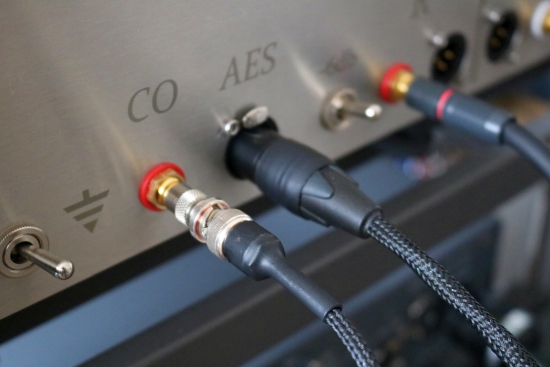
COAX
Between AES/EBU and Coax and when using Jorma cables for both, I observed the same differences as they are usually induced by the different interfaces. The Coax connection sounded a little leaner and tighter, also in focus, and AES/EBU connection a little fuller and a little bit wider in terms of imaging. Otherwise, they proved very similar, indicating that there are no meaningful differences between the Heléne’s Coax and AES inputs.

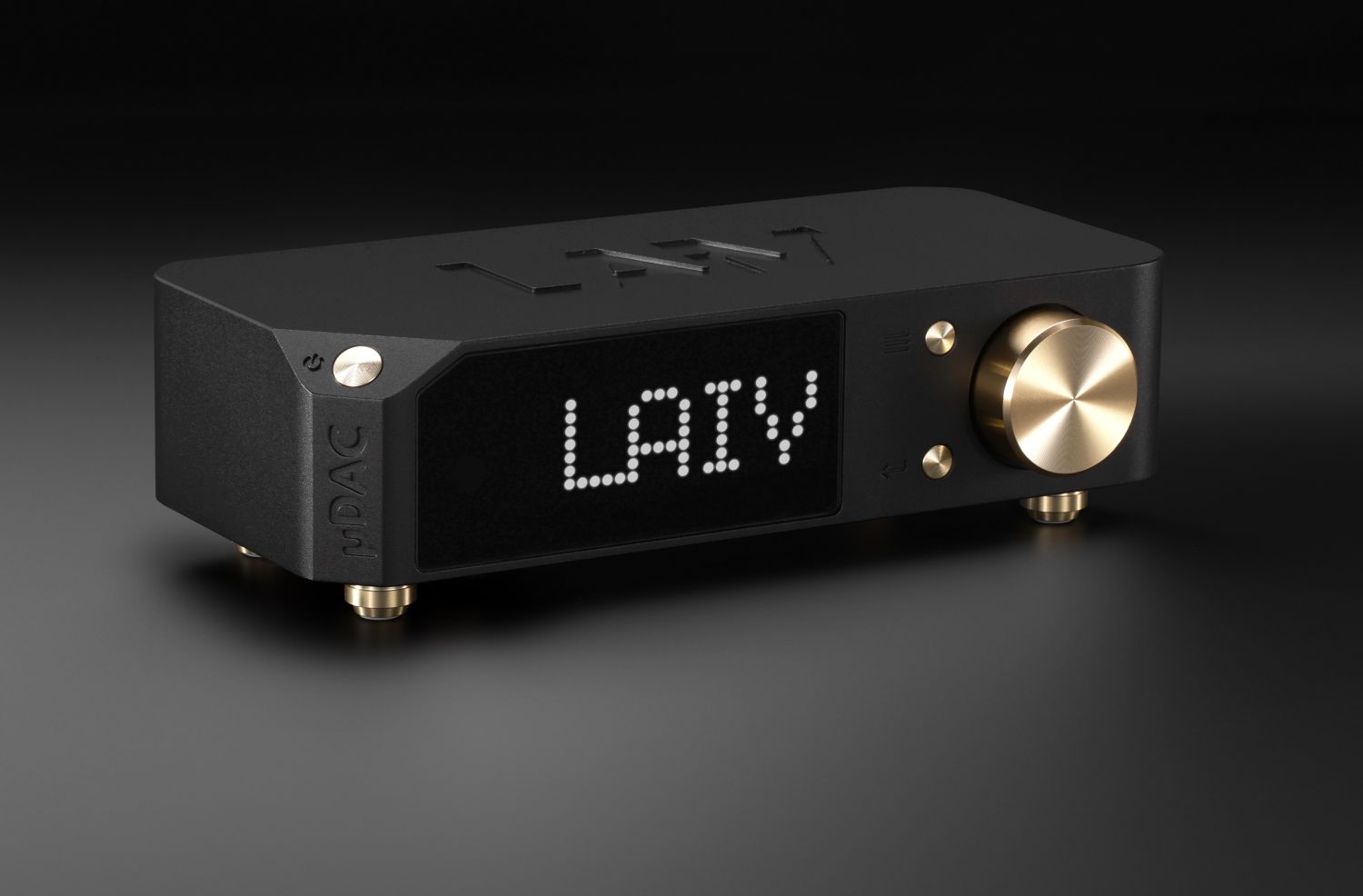
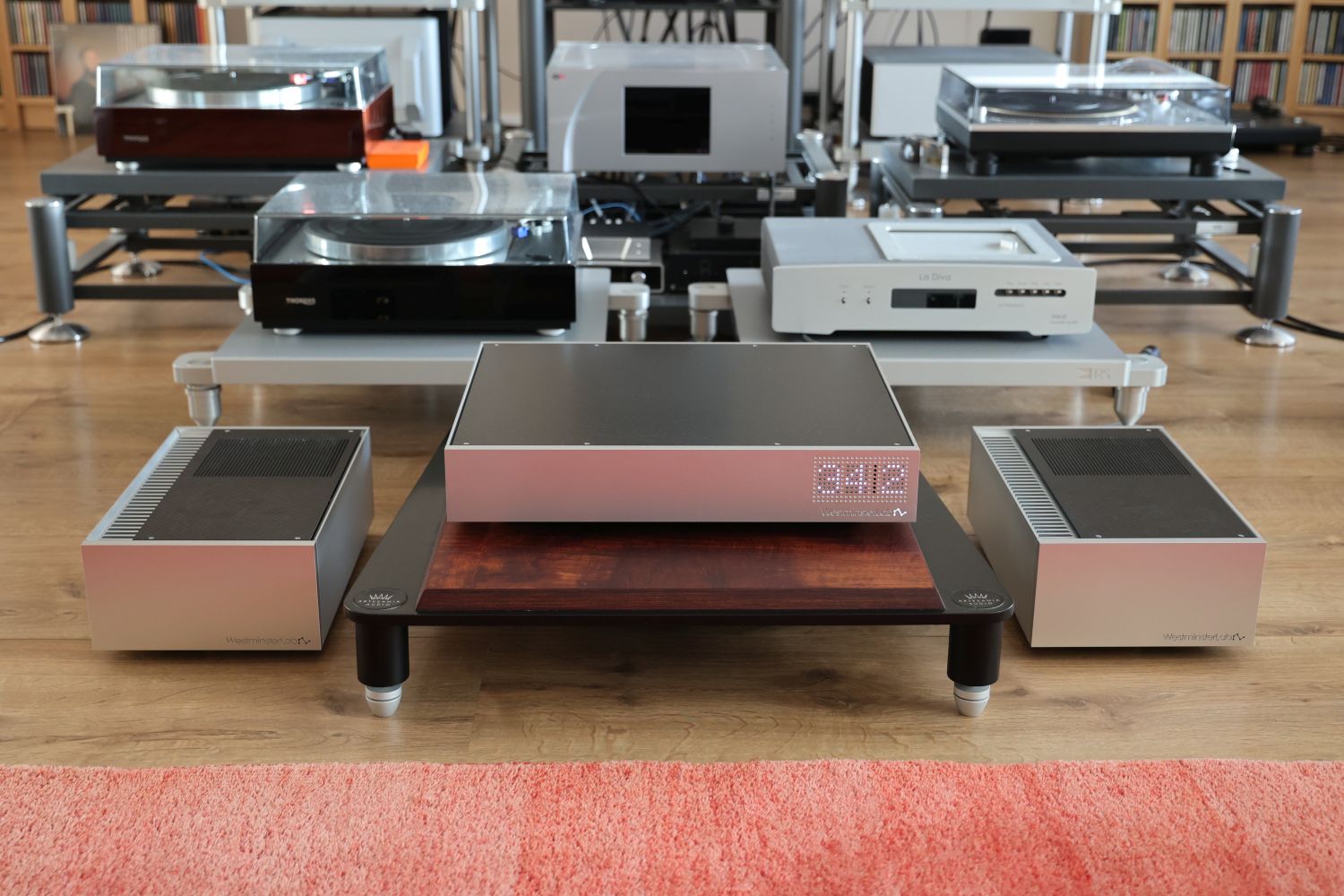

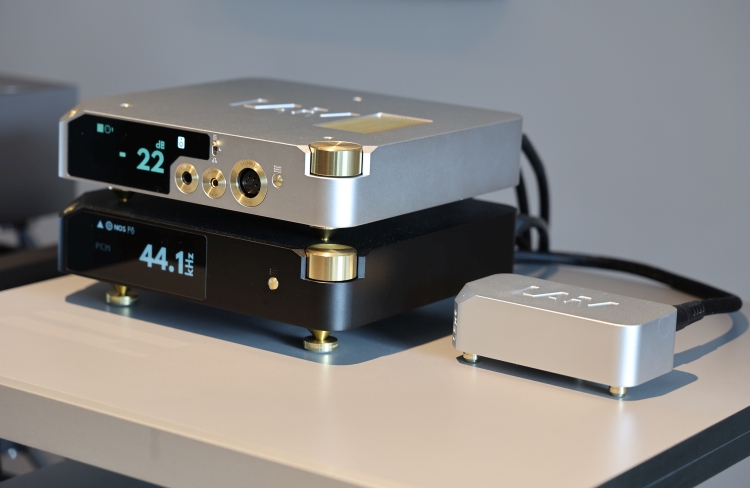



Christian,
Great review on a brand I’ve heard a little about but never seen a review of. And you’ve certainly proven what are some truisms for me, a preamp is crucial to ultimate sound quality, and all things being equal tubes are best. 😉 Now all things are rarely equal of course but that Incito preamp sounds pretty special I’ve always found a tubed preamp to have an outsized effect on overall sound quality. I doubt I’ll ever hear one but would love to.
Cheers,
Jon
Thanks, Jon, the Incito S truly is something else. And Ron tells me that the bigger preamp “walks all over it”… Gulp. I thought hard about which award to give it but even if I will have no higher praise than “Magnificent Masterpiece” to award, should I ever review the Impera preamp, I decided to award it to the Incito S.
Jon,
I discovered Christiaan’s website quite by chance recently. Since then, I stay tuned.
I am the very happy owner of an Aries Cerat *Incito* preamp (not the S version, so mine has an embedded power supply; the S version has a separate PS).
It easily replaced my YBA 1 preamp (which had a separate PS).
The Incito changed my system. That thing is not of this world. Period. Some say that Aries Cerat preamps are the only ones which decide the aficionados of passive preamps to abandon their fetish.
I attend to live concert regularly, so I do not like “typical” tubes devices (honey-topping on everything). This one is truly different. I was amazed by the amount of both body&liveliness, distinction&exuberance, flesh&transparency it could deliver. A dizzying ability to deliver qualities that other high-end devices have accustomed us to consider as opposites. Here, they are reconciled/synthesized with a stunning mastery.
Try to listen to one.
FYI, my *power amplifier* is a YBA Signature Classic stereo (100w), very “liquid”-sounding.
(I also listened to a whole Aries Cerat system, in a very good room: gobsmacking…)
Orfeo that’s very cool and quite a good system you have YBA is another brand somewhat underrepresented here in the US that I’ve never heard. The Incito sounds like an amazing piece of gear, I hope Aries Cerat will show their gear at US audio shows, whenever they start happening again. The Capitol Audiofest here in DC is my outlet for hearing gear I otherwise might now, And Orfeo may I ask what speakers you’re pushing with that lovely amplification stack?
Cheers,
Jon
P.S. Agreed Christian is one of the very best and most thorough reviewers out there.
Please allow me to report additional experiences with the Synergistic Orange fuses and Aries Cerat. The review mimics my own experience, and if it all stayed just like that it would be a very nice tweak to put it mildly. But after some week of daily playing, there is no less than a small transformation here.. the bold euphoric ‘technicolor’ impression at first date seem to shift into a more speedy, open and articulate sound. It sounds more balanced now, and all is like a wide open window onto the musical landscape. It may sound silly, but the Orange Fuses need playing… Both Genus, Incito and Heléne have the Orange in. Great stuff, highly recommended.
Thanks for the helpful feedback, Ron!
Wow THAT’s a review! Thank you very much Christiaan for the hard (pleasant) work such a thorough review must have required. Testing all combinations must have been very time-consuming.
Regarding the TUBES LIFECYCLE, I read in the review that
1. “the manual […] mentions avoiding frequent on-off switching of the unit to preserve tube life.”
2. “That’s why Ron simply always leaves them switched on and told me to do the same. I should note that in this case, the tubes will respectively last at most 250 and 375 days”
As a very happy owner of an Incito preamplifier since 2018, this grabbed my attention:
point 1: avoid “frequent” on-off switching. What do they call “frequent”? I always do max ONE on-off switch per day. I do not let the preamp burning all day when I am away. Moreover, I know that there are 5 chokes inside the Incito, so I suppose they damp the ‘brutality’ of on-off switches, don’t they? If so, what’s the point in keeping the device turned on? (except to avoid any warm-up time, which is a different issue).
However, regarding point 2, leaving the device ON permanently ensures the reviewer that the device plays at its full potential all the time indeed. Which is commendable, especially for a reviewer.
So, as far as I understand,
– if I leave the device ON all day, 24/7 => tube life=250/375 days (rectifiers/E280F, respectively)
– if I turn the device ON when I come back home, and OFF when I go to sleep => tube life=approx. 5 years, BUT a warm-up time has to be endured everyday. A warm-up of 30 min/1h is said to be sufficient, but not everyone agrees.
Am I correct? Or am I missing something?
Thanks.
Glad to hear you liked it, Orfeo! Indeed, this has been a lot of work, but when any question forms in my mind during a review, I NEED to investigate it and report on it. I can’t help myself…;-)
Regarding warm-up, in general, my experience is that 45 minutes gets you pretty much all the way there with most tube equipment, with small incremental improvements in the hours thereafter, for some equipment.
As for what constitutes frequent switching, that’s a great question but not one that I can answer. All I can say is that I personally prefer not to leave tube equipment on when I’m not listening to it. Typically, I have the Ayon gear switched on for around 5 hours per session but since they are in my secondary system, I only use it about once a week. The same applies to the Ayon Stealth that I use in combination with the turntables in the main system.
Perhaps Ron or Stavros are willing to get into more detail with regards to tube life versus power cycles.
Hello Orfeo
What is recommended, is turning the units on and off during your sessions, or maybe a few hours before. Though units can stay on 24/7 it is not really optimum for tube life.
What I would call frequent on-off, is the habit of very few people, turning on and off the units several times a day, listening for example for an hour, turning off, and then on again after a while.
Certainly 2-3 power cycles a day is far from calling it frequent on-off.
On turn on, though triple choke filtered, the rectifier is always having its roughest moment of the day 🙂
Cheers
Stavros
Tubes are a hotly debated topic. Of course, there are many different opinions, or different experiences. It is a choice to leave a tube DAC or Pre-amplifier always on or not. The suggested lifetime is just that; a suggestion, maybe a prediction. There are always extreme examples concerning tube lifetime, there are power amplifiers whose tubes after 25 years of continuous work still measure as new. Of course that is exemplary, and quite out of the ordinary. There are also known amplifiers that need new tubes about every year (..), and sometimes including the tube sockets. In principle it is a good idea to measure all tubes every (half) year, and to write down the values. Personally, I find it a bit too much to keep the Genus 813P in continuous operation, but the Incito and Heléne are fine for me. Only time will tell to what extent the GZ34 and E280F will decrease in measured values. It’s a balancing act, and for me personally, that choice is in favour of always leaving it on. As they say: Your Mileage May Vary. In the meantime; Keep spinning and enjoy the Music!
Are you using the preamp incito with the integrated amp genus. Is it advisable and does it make any improvement.
I have not tried this, so alas, cannot comment with any certainty. In general, I would not expect an integrated amp to very easily have a similar quality preamp on board as good as the Incito S. On the other hand, integrated preamps benefit of shorter signal paths and optimized circuitry. What I can also say is that pretty much any amplifier will allow you to hear the benefits of a better preamp. In fact, I’d rather have an expensive preamp and a less expensive power amp than the other way around. But ultimately, I cannot make any hard claims, only recommend to just try it.
I know from a VERY reliable source that
Incito preamp* + Genus P** does not quite equals a Genus integrated (because 1. shorter signal paths, as Christian said, and 2. identical volume control on both, i.e. relays).
*Incito preamp = ‘basic’ model, NON-S (=Prestige Series)
**Genus P = the POWER AMPLIFIER ONLY version of the Genus.
**BUT** if you consider the Incito S (=Reference Series) as a preamp, that becomes another story (the volume control here is better, with TVC system, that is based on a transformer; it is said to be the best volume control systems of all).
I have NO information regarding such a combination (Incito S + Genus P).
You don’t mention which gear you already own. But, as Christian said, yes, it is advisable to get the best possible preamp first, then see what you can later afford as a power amp, and which one does the best match with your speaker. This way, the preamp can become the tether of your system, the gear that will go along with you during all your audiophile life.
Happy listening.
Great reply, Orfeo!
Is de Dac Helene een meerwaarde voor mijn huidig systeem? Dit bestaat uit de Accuphase E600 en de B&W 803D3.
Is the Dac Helene an added value for my current system Accuphase E600 and B&W 803D3?
Hi Marc, I’m assuming you have the DAC board installed in the E600? In that case, the Helene will indeed have a lot to offer. What the converter board does very well is pacing, articulation, and dynamics. It’s not the best in terms of refinement, fluidity, and flow. And that’s exactly where the Helene does excel, among other things. Of course it depends on what you value most in the sound. In general, though, I’d say the Helene is considerably better. The only reservation against the Helene that I could think of is if you value bass tightness over all else. But that goes for a large majority of tube products.
Hi Christiaan. I want to know if Aries Cerat Dacs decode DSD. Although it´s rate samples is up to 24/384Khz, I couldn´t find if decode dsd or only PCM. Thanks
Hi Pablo, the Helene only converts PCM, no DSD.
Hi Christiaan, Just curious whether you’re still using the Orange fuses? Or have you moved back to previous uses or perhaps even “upward” in the SR line to say, their Master fuses. In any case, if you did switch, I’d be curious why.
These Aries Cerat products, as well as the fuses, were supplied for review. After publication, they all went back. I did not try any SR fuses in other equipment after that, mostly because I prefer tightness, control, and neutrality over smoothness, saturation, luxuriousness, or warmth. However, there are indeed other, more neutral SR fuses that I might try some day.
Thanks for the update on the fuses, Christiaan! So are using stock fuses now or the Hindi Tuning ones, perhaps?
I use stock fuses in all components. However, for the main system power supply, I do use a Siemens Sitor Cylindric Fuse Cartridge (with standard silver-plated fuse and solid silver rod), followed by GigaWatt G-044 Schuko Wall Sockets, and a PS Audio PowerPlant P20.
You can track all of my system components as well as the changes over time here: https://www.hifi-advice.com/blog/category/hfa-audio-setup-snapshots/
Thanks, Christiaan! Looking back on what you said, it’s interesting as the qualities you said you prefer are the ones that I seem to hear people attribute to SR fuses (over the ones you mentioned you don’t prefer):
“mostly because I prefer tightness, control, and neutrality over smoothness, saturation, luxuriousness, or warmth.”
So you noticed the SR fuses being smooth, saturated, luxurious and warm?
That is correct, I perceived the fuses I heard as part of this review as smooth, saturated, and luxurious They were less tight, crisp, and neutral than the standard fuse.